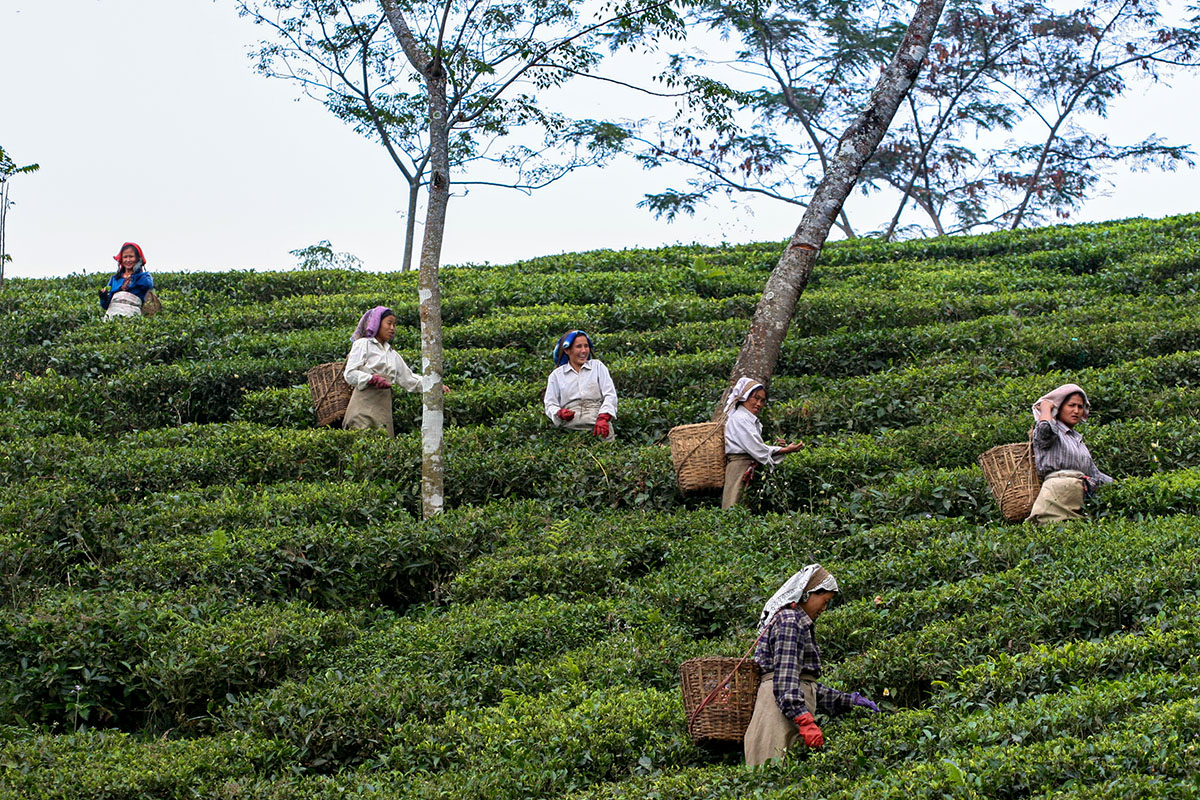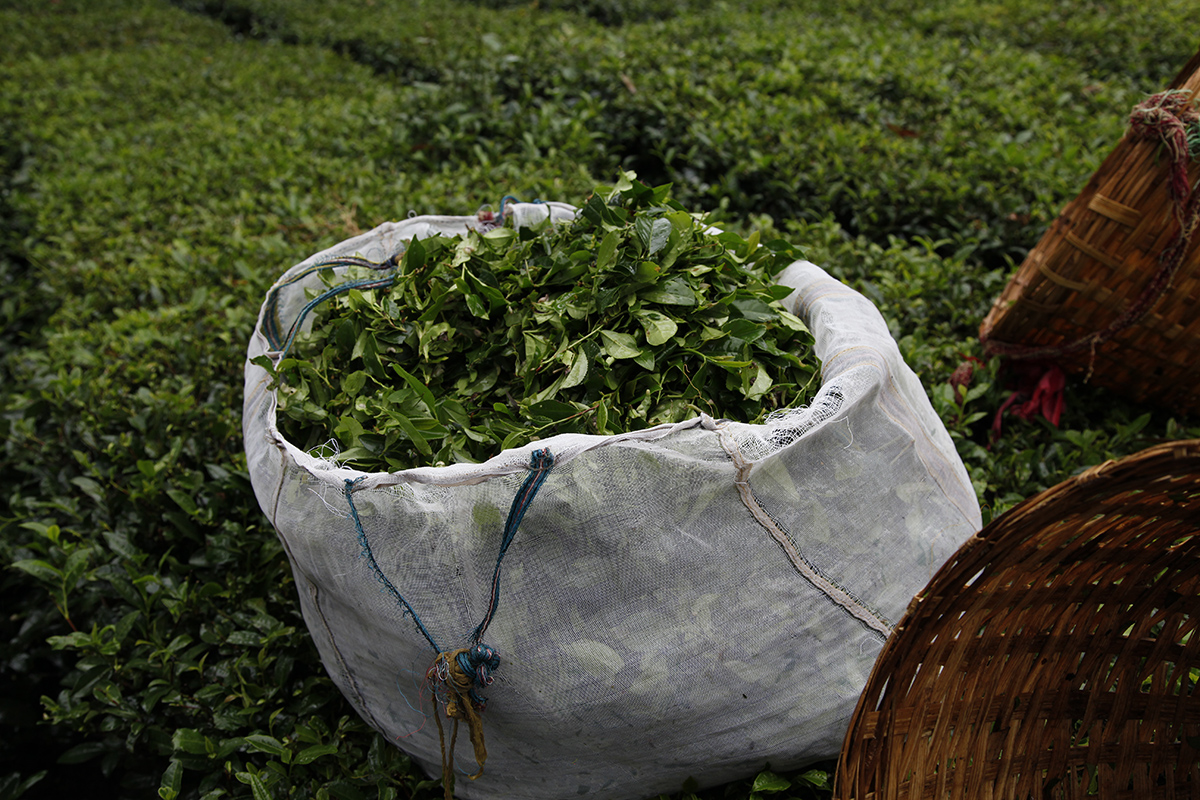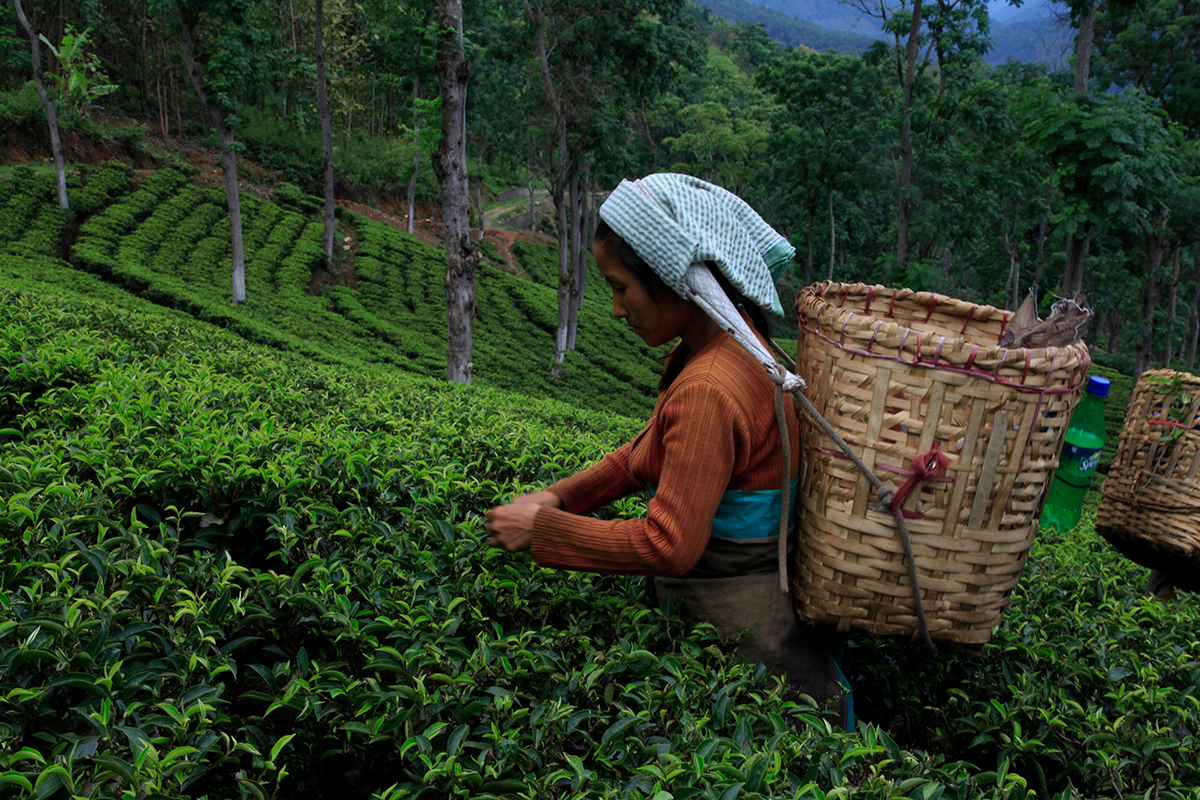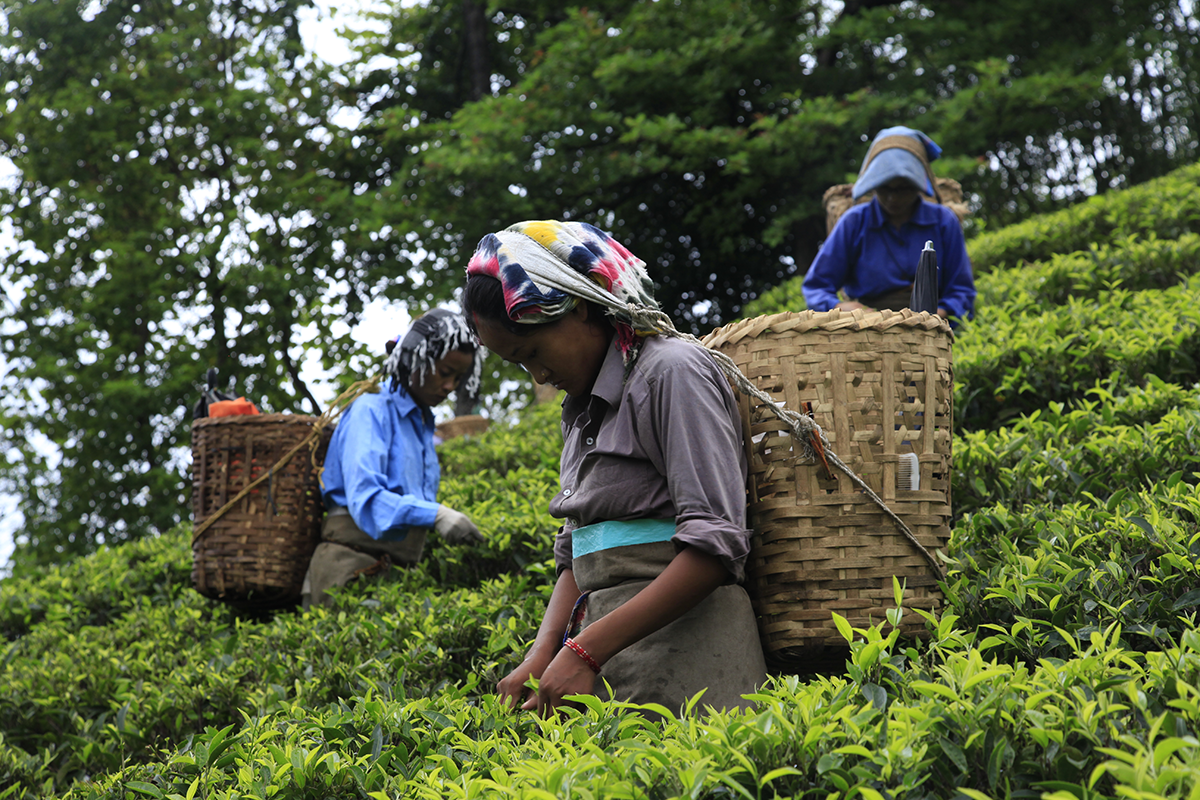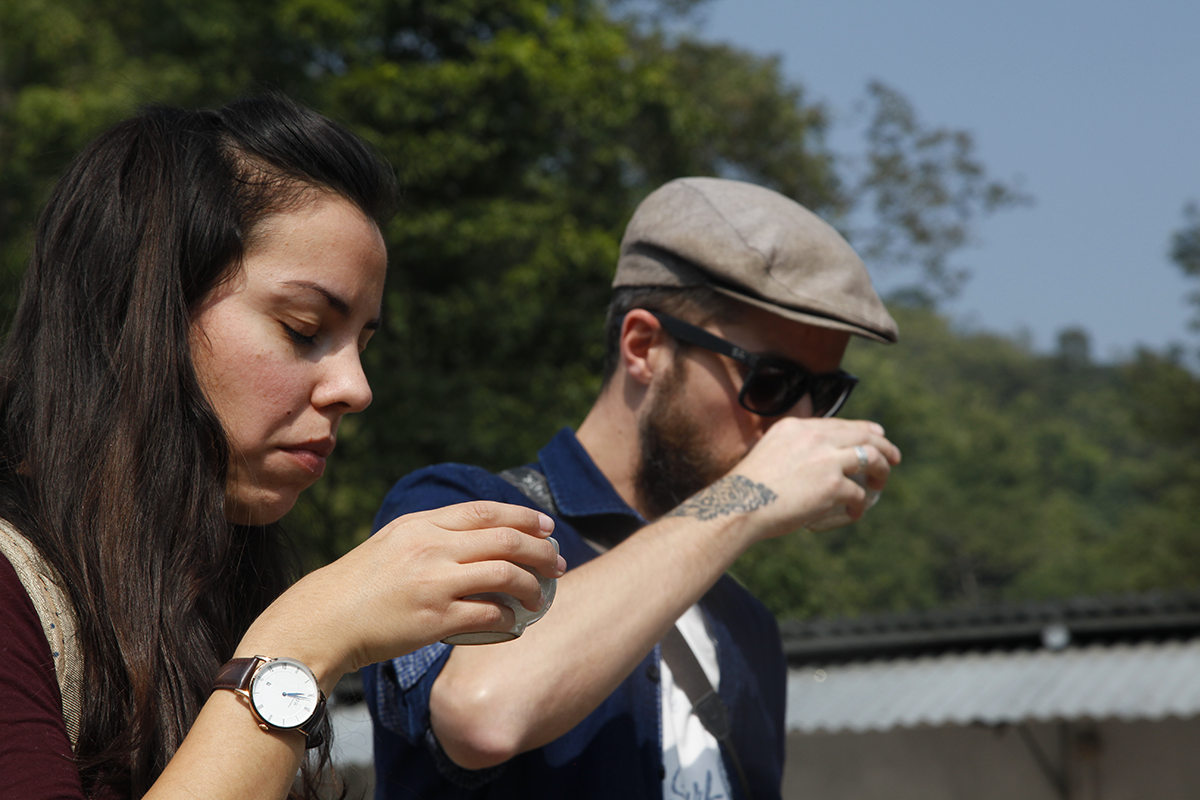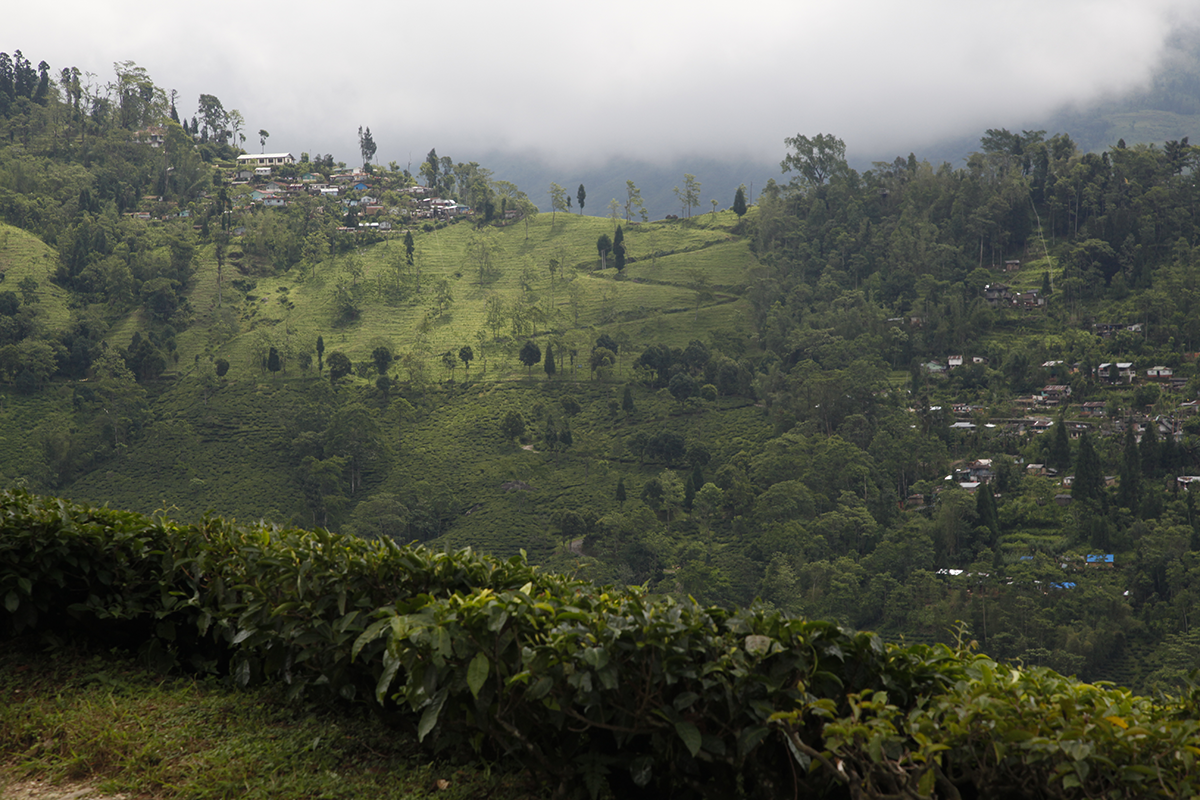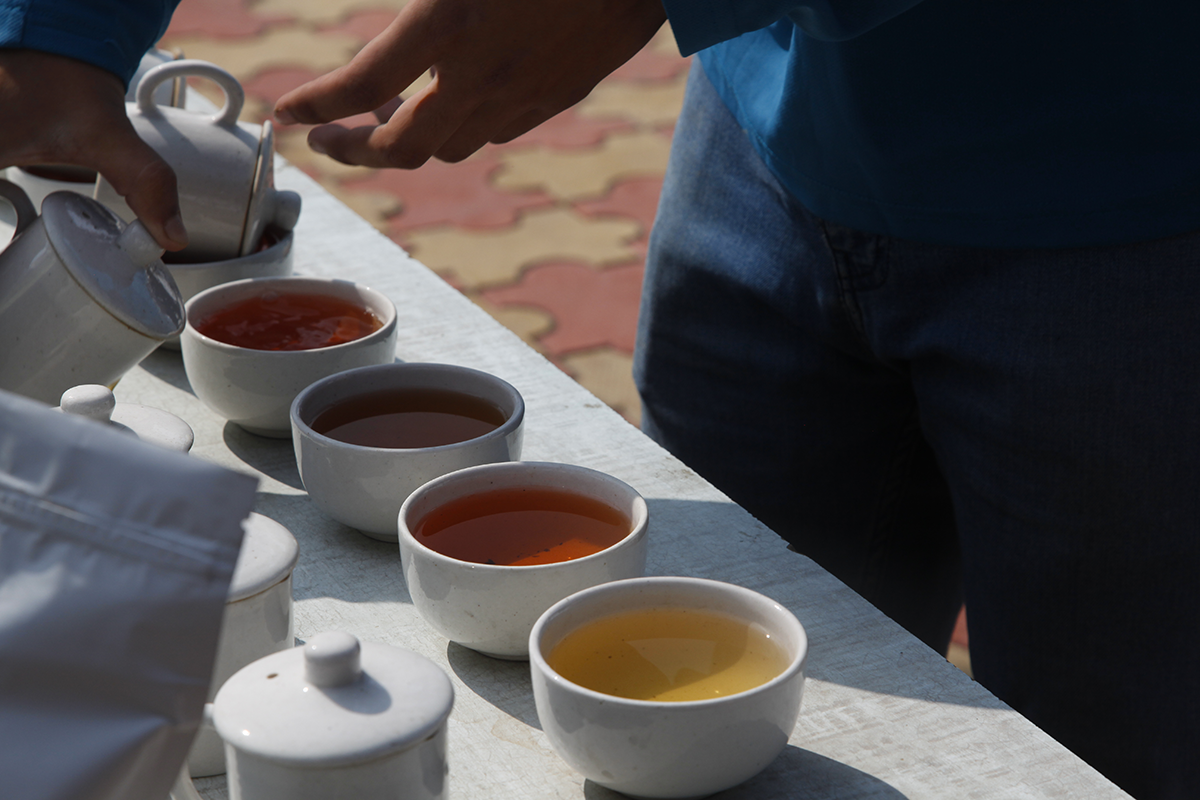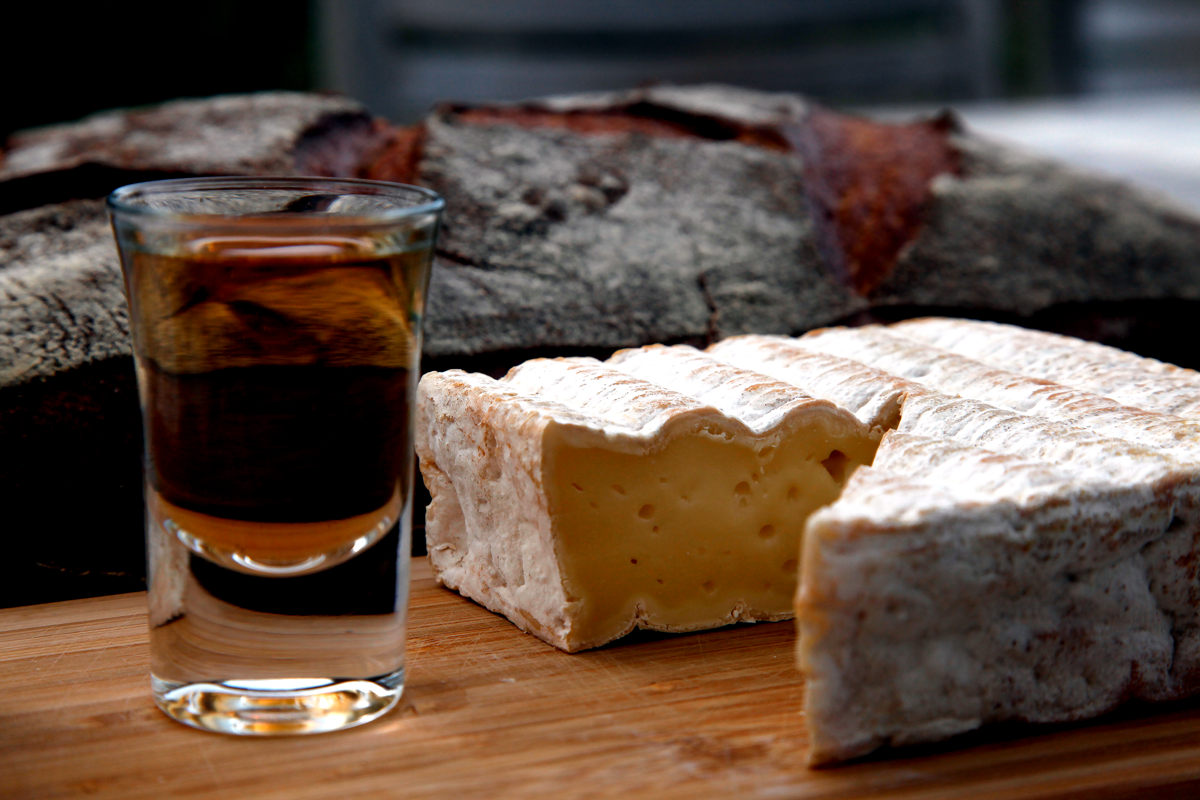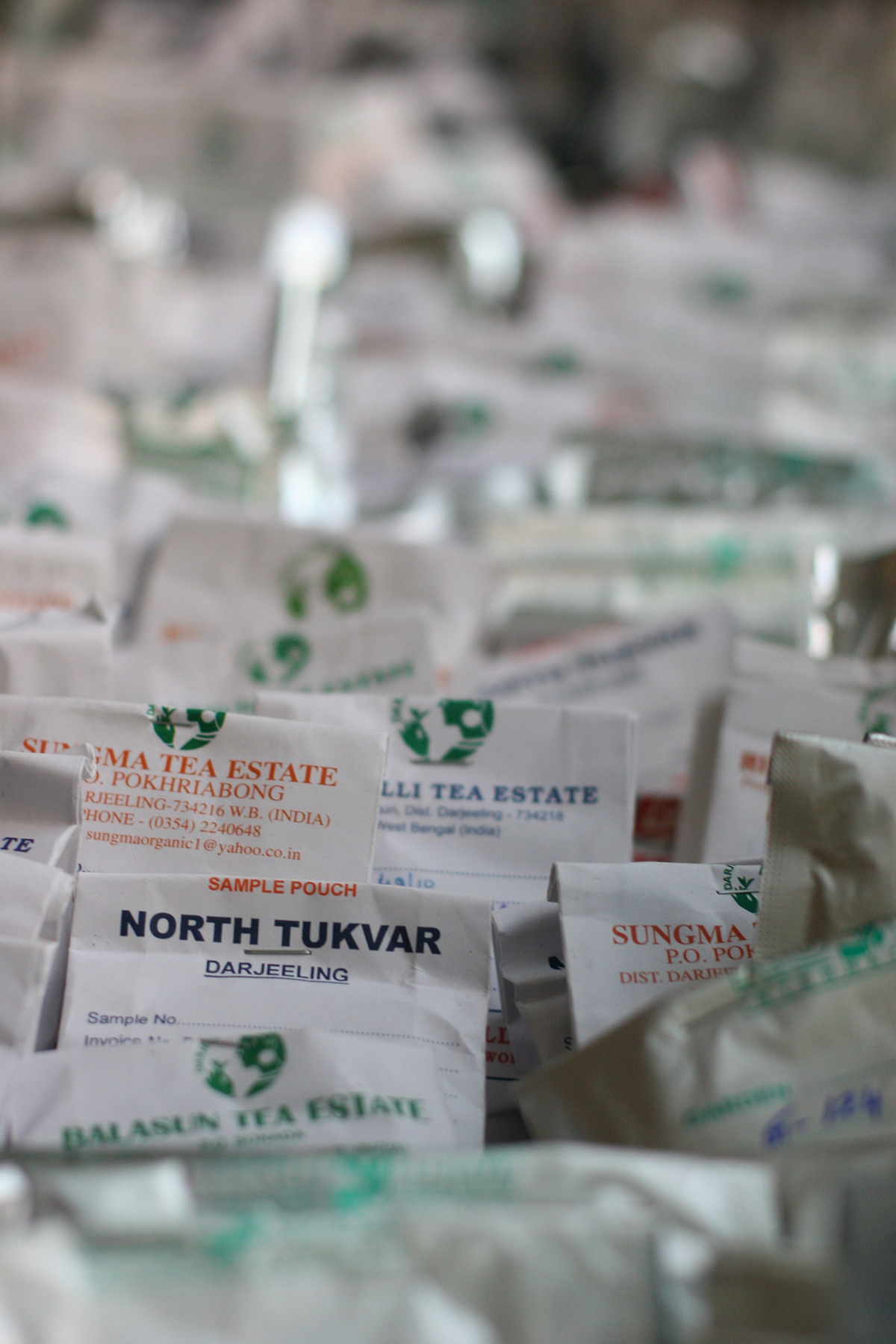These tea pickers have less to fear from Coronavirus than others. They walk to work, they move about in single file, they keep a good distance between themselves, and what’s more, they work outside. Sadly, this isn’t enough in a country of more than a billion inhabitants, and now the entire Indian population must stay at home. Let’s hope that we can banish this virus quickly, and get back to savouring their country’s delicious teas.
India
The joy of singing
They haven’t seen one for nearly twenty years – a rainy winter. For almost two decades, planters constantly complained about the dryness in January or February, or both. In 2017 the weather really was against them: not a single drop of rain fell between October and March. At last, in 2020, the region was treated to magnificent rainfall all winter. But water isn’t everything. For the leaves to grow, they need heat too. And this year, it’s too cold for them.
While we wait for the soil to warm up, we’re tasting last year’s teas again, to remind ourselves of them, as well as the few low-altitude batches that have been freshly produced in miniscule quantities. Meanwhile, the pickers keep themselves happy by singing.
While we’re waiting for Northern India, discover the South
Every year, many of you eagerly await the first spring harvests from Darjeeling. But as you perhaps know, the first Darjeelings of the year aren’t the best, and it’s a good idea to hold back.
As it happens, I’ve just selected a rather exceptional Kotagiri Frost from Tamil Nadu. Although Southern India produces vast quantities of tea, the quality is rarely up to scratch. However, if you look carefully, you can find small plantations that produce remarkable teas at certain times of year. This is the case with this Kotagiri Frost, which will be available in a couple of weeks. Enjoy savouring it while the winter mists clear from the Himalayas and give the young shoots freedom to grow.
A question of altitude
The harvests will begin soon in Darjeeling. Happily, the tea is still picked by hand. The low-altitude plots are harvested first, for a simple reason: the tea plants have benefited from higher temperatures, meaning the terminal bud has grown faster. We can see that this photo was taken at the bottom of the valley, due to the gentleness of the slope and the density of the covering that protects the bushes from excess sunlight.
An inaccurate French name
The first Darjeelings of the year are generally described as the “first flush” in English, but in French, they’re known as the “spring harvest”. The latter is misleading as the harvest doesn’t fully coincide with the season. There are two reasons for this. Firstly, the low-altitude plantations that use irrigation techniques benefit from more clement weather and sometimes start producing small batches from the end of February. Secondly, the leaves on the same shoots are harvested every eight to ten days, and after three successive growths, the shoot’s thwarted growth leads it to send out a side shoot (this is known as the banjhi), which is of a lower quality and marks the end of the first harvests. This means that the so-called “spring harvests” actually come to an end around mid-April.
Admiration
Who do you admire the most, Sylvie Lavabre, a French journalist, asked me. I admire people who don’t give up, I admire adventurers and artists. I also admire tolerance and non-violence. I admire people who don’t compromise their values, who pursue a goal other than earning more money, or of gaining more power. I admire altruists, people who are happy when others are happy. I admire the highest achievers, the champions, the finest artisans, everyone who tries their hardest. I admire those who fail and pick themselves up and find the strength to try again. I admire people who devote a part or all of their life to bringing up others, raising children, educating them, teaching them. And I admire people who find happiness in what they have.
Hedgerows and field margins
When I travel across some regions of France, I’m alarmed. Where are the hedges? Where are the field margins? When I travel around the world, if I come across a tea plantation that extends as far as the eye can see without so much as a tree, a hedgerow or a field margin left to nature, I run a mile. I can be sure that I won’t find clean teas there, grown in conditions that respect nature. To produce clean teas without the use of pesticides, you need to work with nature. You need ladybirds to attack other insects, you need birds to eat the insects, you need earthworms to aerate the soil. You sometimes need cows, to mix their manure with green waste to feed the worms and enrich the soil. But all these creatures need somewhere to live. Hedges, trees, field margins, even a cowshed. In my job as a tea researcher, which involves seeking out good quality products grown using clean and sustainable farming methods that respect nature, a field containing a single crop covering hundreds of acres is a nightmare scenario.
Here, in Poobong (India), is a landscape that offers hope for biodiversity.
A hundred teas a day
When I tell people that I sometimes taste 50 or 100 teas a day, or even more, many are surprised, and ask: how can you try that many teas and still taste something?
In fact, it’s easier to taste 20 teas than just one, especially if they come from the same terroir, because as I move from one liquor to the next, comparing how long they linger in the mouth, their flavour and their aromatic profile, it becomes quite easy to form an opinion on each one. When you taste a single tea, you have to be a complete master of tasting techniques and have a solid knowledge of the typical characteristics of that type to be able to form a proper opinion.
Shiraore Kuki Hojicha and Pont-l’Evêque, an amazing pairing
In general, Japanese roasted teas work very well with food such as shellfish, pan-fried salmon and smoked fish, as well as desserts with red fruit or praline. They are also ideal at the end of a meal, even for coffee-lovers who appreciate their roasted aromas.
Here, Shiraore Kuki Hojicha stands up well to a Pont-l’Evêque. On contact with the cheese, it develops woody, burnt aromas as well as notes of cooked fruit. It’s a great combination.
The tea was infused for an hour in room-temperature water. It can then be kept in the fridge for 24 hours.
Do you speak DJ-12-SFTGFOP1-Clonal-Superb?
I’m often asked what the letters and words mean following the name of a tea. Let’s take the example of a first-flush Darjeeling, Singbulli DJ-12-SFTGFOP1-Clonal-Superb.
- Singbulli is the name of the plantation
- DJ12/19 means it’s the 12th harvest of the year 2019 (when you see EX12/19 instead of DJ12/19, EX stands for “extra”, meaning an additional batch, processed in addition to the main batch of the day)
- The letters SFTGFOP1 refer to the appearance of the dry leaf. The grade FTGFOP stands for “Finest Tippy Golden Flowery Orange Pekoe”. This means it’s a whole-leaf tea with plenty of tips, or buds. Over the years, the story has grown and the description has expanded. S means “Super”, and 1 means… Who knows? It’s a mystery!
Today, only Indian producers use the grade SFTGFOP1.
Next week I’ll tell you about the descriptions Clonal, Superb, Exotic and Delight!

